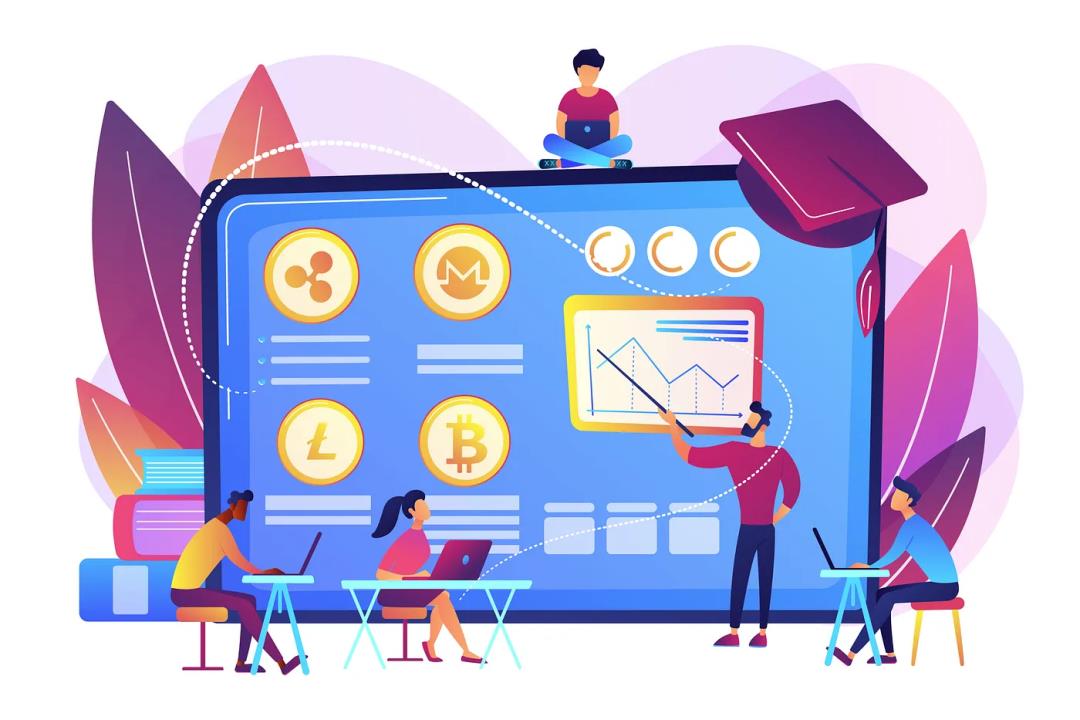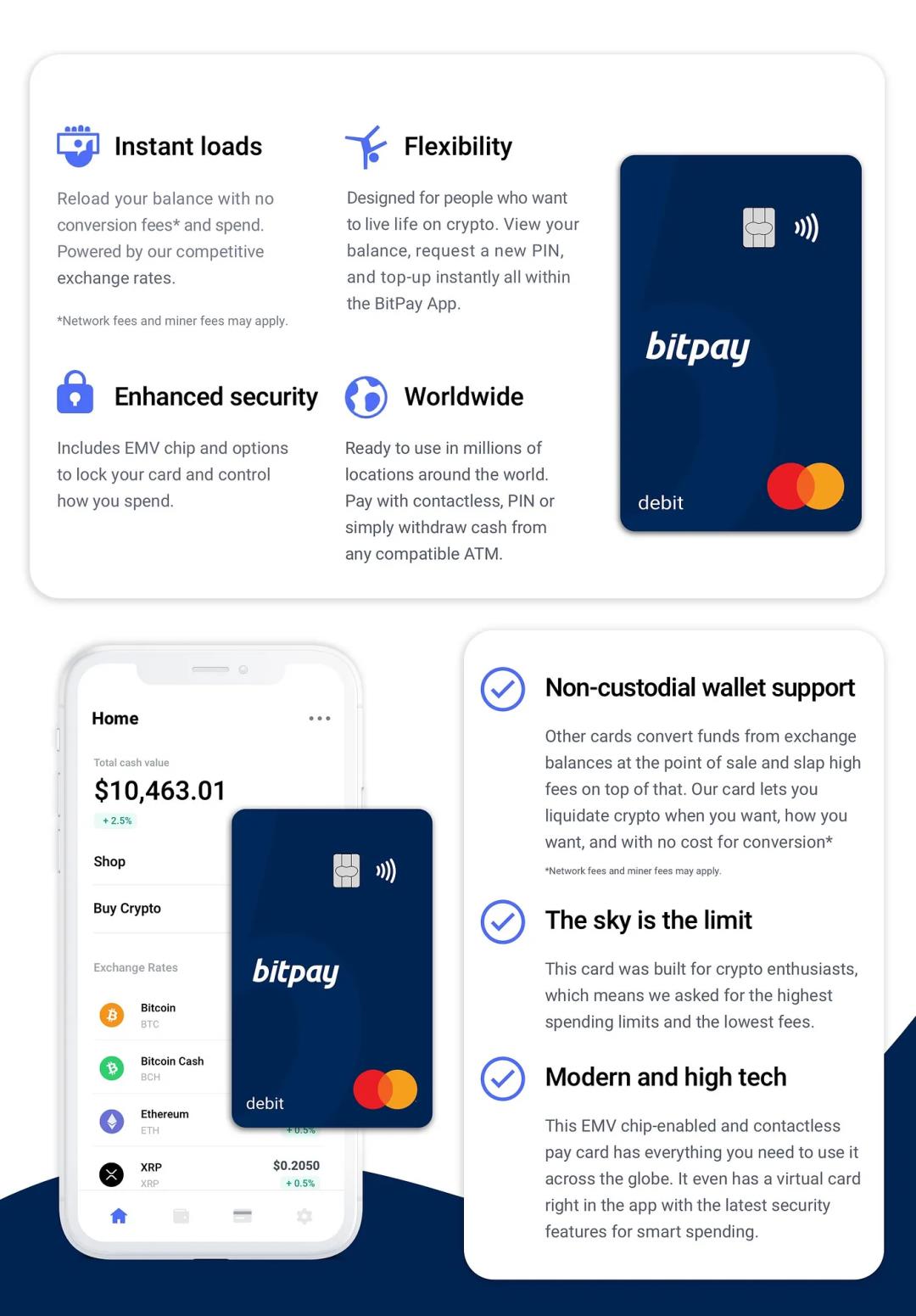Dialogue with Houston Harpp: How to Simply Create Attractive Web3 Products?
Author: Yujing, Moonshot Commons
Houston Harpp, founder of 021 Company, product designer with a background in front-end development and over 15 years of experience. He focuses on building initial MVPs for early-stage startups and providing support, specializing in designing user interfaces for mobile and web applications. His designs emphasize emotional resonance and user satisfaction, characterized by exquisite craftsmanship and a minimalist style.
Previously, he led the design work for Coinbase Wallet, making significant contributions to the security and accessibility of web3 wallets. Before joining Coinbase, he served as the design director at BitPay, driving advancements in the blockchain payment sector.
Before engaging in various Web3 projects, Houston was an independent designer, creating products for startups, venture capital firms, agencies, and even corporations like IBM, CDC, Spark Capital, Turner Broadcasting, and Georgia Tech.
In this episode of Moonshot Mafia, we invited Houston Harpp from BitPay and Coinbase Wallet to discuss his insights on Web3 product design, his personal ups and downs in the cryptocurrency field, and more.

1. A Crypto Product Designer's Narrative
By using the products I designed, I truly understood the complexities of cryptocurrency transactions and the essence of similar products.
Harry Zhang: Could you briefly introduce your experience in Web3 and product design so far?
Houston Harpp:
It all started around 2009 when I was still working in the general tech field. Initially, I worked on some projects at CDC, then became a consultant at IBM, and spent some time in broadcasting. These experiences sparked my strong interest in internet technology.
In 2014, I collaborated with an agency on projects for some startups in the New York area. This experience gave me deep insights into how startups operate. Subsequently, I began researching cryptocurrency and encountered various companies in the crypto fintech space. Ultimately, inspired by a friend, I chose to join the local Atlanta company BitPay, which was a significant player in the Bitcoin payment processing field at the time.
However, when I first joined BitPay, I knew almost nothing about Bitcoin and was unfamiliar with how Bitcoin worked, fintech, or even banking. Everything was very foreign to me, but it was during my time at BitPay that I gained invaluable learning experiences.
My primary task was to develop an open-source wallet, the Copay wallet. After that, I continued to develop other payment tools, such as cryptocurrency invoices and debit cards. BitPay thus became the first company to issue a crypto debit card. I worked at BitPay for seven years, from 2015 to 2021.
After 2021, I transitioned to Coinbase, where I was responsible for designing a wallet extension product for Coinbase. This was Coinbase's first product, an innovation from zero to one, which also laid the groundwork for redesigning the mobile wallet. Subsequently, I also participated in the design work for wallet security.
Harry Zhang: I remember in 2015, the crypto ecosystem was still in its infancy. What gave you the belief to go all in on cryptocurrency so early?
Houston Harpp:
The first reason is that I believe as a product developer, I should be a user of the product. When I first entered the cryptocurrency field, I was a complete novice and didn't even know how to acquire Bitcoin. Therefore, my only option was to start learning and using these products.
The second reason is that at that time, the price of Bitcoin was quite low, around $200. Compared to now, this wasn't a huge investment. So I thought it was worth taking a little risk.
For these reasons, I didn't just stay at the investment level but actively engaged in practice. By using the products I designed, I truly understood the complexities of cryptocurrency transactions and the essence of similar products.

2. Milestones in the Development of the Crypto Industry
Only time can prove everything, and we still have a lot of work to do.
Harry Zhang: From your perspective, how has the industry evolved from 2014 to 2023? What major milestones or shifts have you observed during your career?
Houston Harpp:
Today, we see many improvements, but like all things in their early stages, everything seemed very primitive back then.
First, the speed of blockchain was not fast. Although it might have seemed fast for users at the time, as more people began to adopt and use blockchain, issues of speed and efficiency gradually emerged, and the need for scalability became very real. Over time, we saw different public chain solutions emerge to address core issues that Bitcoin could not solve alone, such as speed, efficiency, privacy, and more.
Additionally, people's needs and expectations are constantly changing. Every year, new users enter the crypto space, each with varying expectations from Web2 (traditional internet). These users include investors, early adopters, and new users exploring the space. For example, young people who are learning about blockchain for the first time face different challenges compared to those who have been navigating the financial system for decades; they may find it difficult to understand how blockchain works.
Overall, both blockchain and different user groups are constantly evolving and changing, with new expectations emerging each year, hoping to create a better environment. Since I started engaging with the blockchain space, I have observed that the overall environment has improved significantly. Blockchain has become faster and more professional, and the number of tokens is greater than ever. I believe there are still many more cases to be discovered and explored in this field, and there is much work to be done in the future, but at least for now, everyone is exploring quite well.
Harry Zhang: How do you view the overall market sentiment in this bear market compared to previous bear markets (2015, 2017, 2021)?
Houston Harpp:
I think there are some macroeconomic factors that are beyond the control of Web3, and this may be one of the biggest influences on the current bear market.
This feeling is very similar to previous bear markets because typically, after a large influx of new users into the market, some adverse events occur, such as exchanges being hacked, major vulnerabilities, or security fraud, which can change people's perceptions of crypto technology. Some people might say, "Wait, this isn't a truly ready technology; I need to pause my investments." So, it seems we are experiencing such a situation now, only this time the scale of the events is larger, leading people in the industry to pause their investments and actions.
So, personally, I believe that perhaps when the macroeconomic situation improves, we will see Web3 naturally and organically return to the levels seen before 2022. However, only time can prove everything, and we still have a lot of work to do. This is similar to other technologies; when the next version is ready and interested people are prepared, they will fall in love again and bring many past efforts into new changes.
Harry Zhang: What do you think about the views claiming that cryptocurrency is heading towards death?
Houston Harpp:
If cryptocurrency is destined to fail, then by that logic, it should have stopped developing long ago. However, that is not the case; history has proven that the crypto space has shown remarkable resilience over the past nearly ten years. Like many other forms of technology, the existence of crypto technology and its continued presence is akin to the personal computer, which has undergone decades of development and improvement, maintaining strong interest from people. We have evolved from the first rudimentary block brought into homes to the current mobile devices, and over time, it will continue to improve.
I believe the internet is also undergoing similar changes. Although we are still on the way, when our internet and Web3 reach a singularity moment like the iPhone did for personal terminals, we will arrive at a new stage and embrace a new era of the internet.
Harry Zhang: What background led you to specialize in the design of Web3 applications and product design? How do you view aspects such as security, confidentiality, and a simple, enjoyable user experience in Web3 products?
Houston Harpp:
I have always enjoyed exploring new technologies and have been looking for efficient ways to better accomplish common tasks. Looking back in history, the Gutenberg press made printing a groundbreaking invention with infinite possibilities, and communication tools like the telephone truly designed a better experience than before. This is also how I view blockchain applications.
When I entered this field around 2015, most products were only partially designed, often a haphazard assembly by engineers, lacking careful design and not providing simple, user-friendly interfaces. To use these products, you might even need to be a scientist. So my intuition was that this was an opportunity to simplify things, making complex technologies easier to understand, a philosophy that has always guided my product design.
My approach is to deeply understand how the technology works and then look for opportunities to build bridges for ordinary users, enabling them to use it easily. For example, when checking out at a grocery store, most people are familiar with using a POS machine, which provides a convenient and quick payment experience. So my question is, how can we bring this experience to the internet in a better and more effective way?
That's the charm of software. Over time, you can continuously iterate and improve. In this process, you will face various issues: security, privacy, reliability, and the smoothness of user experience. You will continuously optimize these issues, and even if the initial experience may be a bit clumsy, it will get better over time.

3. Systematic Education and Self-Learning
Explore as many different paths of knowledge as possible.
Harry Zhang: What is your view on the relationship between self-learning and your current success? What advice do you have for those aspiring to enter new fields?
Houston Harpp:
Formal education does provide a fundamental knowledge base, but I believe the ability to truly learn and explore new things and possibilities primarily depends on the individual.
In the tech field, often the most cutting-edge technologies are not what you can learn in college, but you can self-learn these topics through reading a lot of books, communicating with others, or using new tools. It is a process of continuous trial and error and progress.
For me, freeCodeCamp is just one of many tools I used to learn programming; I self-learned programming through various effective methods. While college courses typically require you to complete certain tasks, that doesn't prevent you from exploring other areas. I really enjoy self-learning, and I believe that at any time, even if you are focused on a specific field, you can still self-learn other rich and diverse knowledge, which will provide you with greater flexibility.
I firmly believe in the point made by David Epstein in his book "Range," that specialization is not the only path to success. He uses tennis player Roger Federer as an example to illustrate the advantages of well-rounded personal development. Roger Federer has experience in multiple different sports, and these experiences contribute to his hand-eye coordination and overall athletic ability.
I hold a similar view on learning; if you learn knowledge from other fields at some stage, that knowledge may play a role in your later professional field. Therefore, I strongly encourage everyone to self-learn and find methods that suit them, exploring as many different paths of knowledge as possible. Some people prefer reading books, while others enjoy visual learning, such as attending lectures, participating in conferences, interactive teaching, or even watching videos. That's all fine; the key is to find a method that works for you and maintain a continuous learning attitude.

4. The Core of Crypto Product Design
The focus of product design depends on the stage of the company.
Harry Zhang: What does design mean for the cryptocurrency industry? How does it affect users' interaction with blockchain applications and products?
Houston Harpp:
Design is essentially about considering the experience people have when using products related to blockchain technology. Without this consideration, the final user experience can become very cumbersome and filled with technical barriers, only suitable for a niche group like engineers.
Sometimes I hear colleagues say: How can I improve? How can I make it easier for users to use? I find such reflections very interesting because they often occur before users articulate the problems. This is how design emerges and plays a role; it acts as a liaison between the general public and engineering design, dedicated to making complex technologies more human-friendly. For us, design is the process of proposing solutions to problems because if people cannot use our products well, it means we haven't provided a solution to the problem.
Of course, design is not just about solving problems; it also needs to make users feel pleasure when using the product. Only when users receive a new, significantly better experience will they be willing to abandon previous versions. Design provides us with the opportunity to deliver extraordinary experiences to users.
If we can satisfy both aspects, we not only solve the problem but also create an outstanding overall experience.
Harry Zhang: I believe design is crucial for any type of product. In your view, what are the key features of a well-designed product?
Houston Harpp:
A well-designed product must be meaningful and very intuitive. Intuitive means that users can understand how the product works without extensive explanations, just like a doorknob; we naturally know how to open the door.
Additionally, I believe all digital products and experiences should be minimalist. When users face too many choices, they can become confused. In my view, if you want to complete a task quickly, a simpler experience can reduce friction and lower frustration. Therefore, minimalism is an important characteristic of product design.
Moreover, whether through small or large gestures, our goal is to make users feel satisfied, making things easy and enjoyable, allowing them to enjoy the products they use and the activities they are engaged in. For example, if you enjoy drinking coffee or tea, you will surely appreciate the design of the handles and buttons on coffee cups, coffee pots, or teapots, as these designs enhance the pleasure of the experience. Of course, you could also just pour hot water into a pot to heat it, but perhaps that isn't the pleasurable experience you want. As a designer, my task is to figure out what can make users feel pleasure and how to highlight that experience in the product.
Harry Zhang: How do you ensure that Coinbase Wallet meets the needs of both beginners who are not very familiar with the concept of wallets and seasoned users who may have multiple wallets installed across different ecosystems?
Houston Harpp:
I believe that when designing products, the first priority is to establish a clear, well-structured user-friendly principle that will guide product development, ensuring that the product experience remains user-friendly no matter what happens.
Coinbase prioritizes user experience and strives to be a leader in user experience design, stemming from the company's clearly defined set of user-friendly principles. For a company, when considering how to serve users, the first task is to define a principle that remains user-friendly at all times, which must be clear and able to explain all subsequent design decisions.
For example, some small details discovered during the design process can be summarized into these principles. Coinbase has clearly defined these principles and applies them in product development to fill gaps that previously existed, ensuring that users always benefit from a clear, controllable, and secure experience.
Harry Zhang: During your time at Coinbase and BitPay, what common practices did you implement to optimize user experience and ultimately deliver a version that satisfied the public?
Houston Harpp:
Ensuring privacy and security is the fundamental premise for survival in the crypto industry, and this is a core principle emphasized by BitPay. In every iteration, we pay special attention to how to maintain privacy, ensure security, and earn users' trust.
For example, in Coinbase Wallet, we always ensure that users know which DApp they are interacting with to prevent any potential risks. We remind users by highlighting the URL of the DApp, allowing them to recognize whether they are interacting with a legitimate DApp during transactions. These details need to be considered in advance and presented visually to ensure users understand the consequences of their actions. When users transact on Ethereum, they need to know what they will lose and gain, not just sign for the transaction.
Another example is the sliding payment confirmation interface in the BitPay wallet, designed to prevent users from inadvertently clicking the payment button, thus avoiding sending large Bitcoin transactions. This design requires users to confirm their intentions again with each transaction to prevent unnecessary losses due to misoperation.
In summary, privacy and security must be core principles of design to ensure that users can always trust and safely use cryptocurrency products. This requires empathy, deep consideration of user experience, and integrating these principles into every detail of the product.
Harry Zhang: When developing interfaces and overall applications for BitPay and Coinbase Wallet, especially for novice users of blockchain applications, what major considerations and challenges did you face? How did you find a balance between decentralization, privacy, security, and simplifying the complexity of using blockchain applications for beginners?
Houston Harpp:
We can explore the actual experience of a blockchain wallet.
Our team spent a lot of time discovering a fact: when people today register for new bank accounts, they immediately realize they do not have custody of their assets. They have the right to use the account but not control it, as the bank holds their funds. Therefore, we wanted to make it clear from the beginning that blockchain wallet products are different; this is where you have complete control over your assets. We want users to understand how to manage their private keys and why securing and backing up their private keys is crucial, assuring them that they can always regain access to their private keys.
I believe that allowing users to experience this is a new "Aha moment." When users first try something new, although they may not see it as an extension of old habits, they will still use past thinking to understand this new experience until they fully accept it. Therefore, this is actually a challenging process. In the early days, many people expected Bitcoin to be the custodian of their assets, but the reality is different. To help people realize they can truly control their private keys to access and unlock their assets, we must make it clear from the start that all wallet products must be designed this way.
In my view, this is the core significance of the entire Web3. These key experiences have made me deeply feel that we must carefully design to ensure we convey clear information to users, telling them that Web3 operates differently from traditional methods.
Harry Zhang: For those who genuinely want to build revolutionary killer applications in the Web3 space and ultimately bring the masses into Web3, how do you view their design processes? Should they follow a philosophy of continuous iteration, or should they invest significant time focusing on a key aspect of the product, such as ensuring alignment with the vision of Web3, or should they, as you emphasized throughout your talk, provide a simple, enjoyable user experience?
Houston Harpp:
That's a great question; the focus of product design actually depends on the stage of the company. This is because the aspects you need to focus on will differ at various stages of product development.
First, in the early stages of conceptualizing a product and exploring market fit, your focus should primarily be on functionality. When creating an MVP, you need to prioritize listening to user feedback and building a community to quickly gather insights. At this point, focusing on the aesthetics and interaction details of user experience may not be the top priority. In the early stages, you need to understand what truly serves users, even if it means providing a relatively rough experience.
Then, as you enter the development and iteration phase of the product, also known as the growth stage, your focus will shift to ensuring that the user experience aligns with your design principles, such as privacy, security, and simplicity. At this stage, you need to continuously iterate and improve, but this may lead to not providing the best user experience. However, through rapid iteration, you can continuously learn and improve, which is the greatest value of this stage.
Finally, when the company reaches a mature stage, having established a solid product-market fit and a deep understanding of user needs, you can begin to optimize the user experience to make it even better. At this stage, you should think about how to enhance the visual appeal and user interface of the product, allowing the user experience to surpass that of competitors. This is when designers can fully unleash their creativity and bring outstanding visual effects to the product.
The design goals and priorities differ at different stages. The mature stage is when designers truly begin to thrive and bring exceptional visual effects to the product, but before that, it may be too early. In some cases, if too much focus is placed on good user experience in the early stages of a product, it may waste a lot of time.


5. New Trends in Web3
I remain optimistic about the payment sector.
Harry Zhang: As a veteran, pioneer, and designer in the crypto space, what emerging trends and technologies in the crypto field interest you?
Houston Harpp:
Recently, several notable trends have emerged, with two areas particularly standing out.
First is artificial intelligence, which has significant potential in blockchain applications. This field presents many problems and challenges that need to be addressed, not only for designers but for the entire industry. Thinking about how to fully leverage the potential of artificial intelligence in blockchain applications is an exciting topic.
Another key trend is Web3 messaging. Currently, there are many different messaging tools, such as WhatsApp, Telegram, Signal, Apple Messages, SMS, etc. However, if a way can be found to unify these tools and leverage blockchain technology to enhance their privacy and security, it would be a tremendous opportunity. As designers, we can create richer experiences for users in this area.
Additionally, I remain optimistic about the payment sector. This is a use case that has yet to fully realize its potential. From how people pay online, how to simplify payment processes, to how to achieve seamless connections, there are many areas that need to be addressed and learned throughout this entire process.










